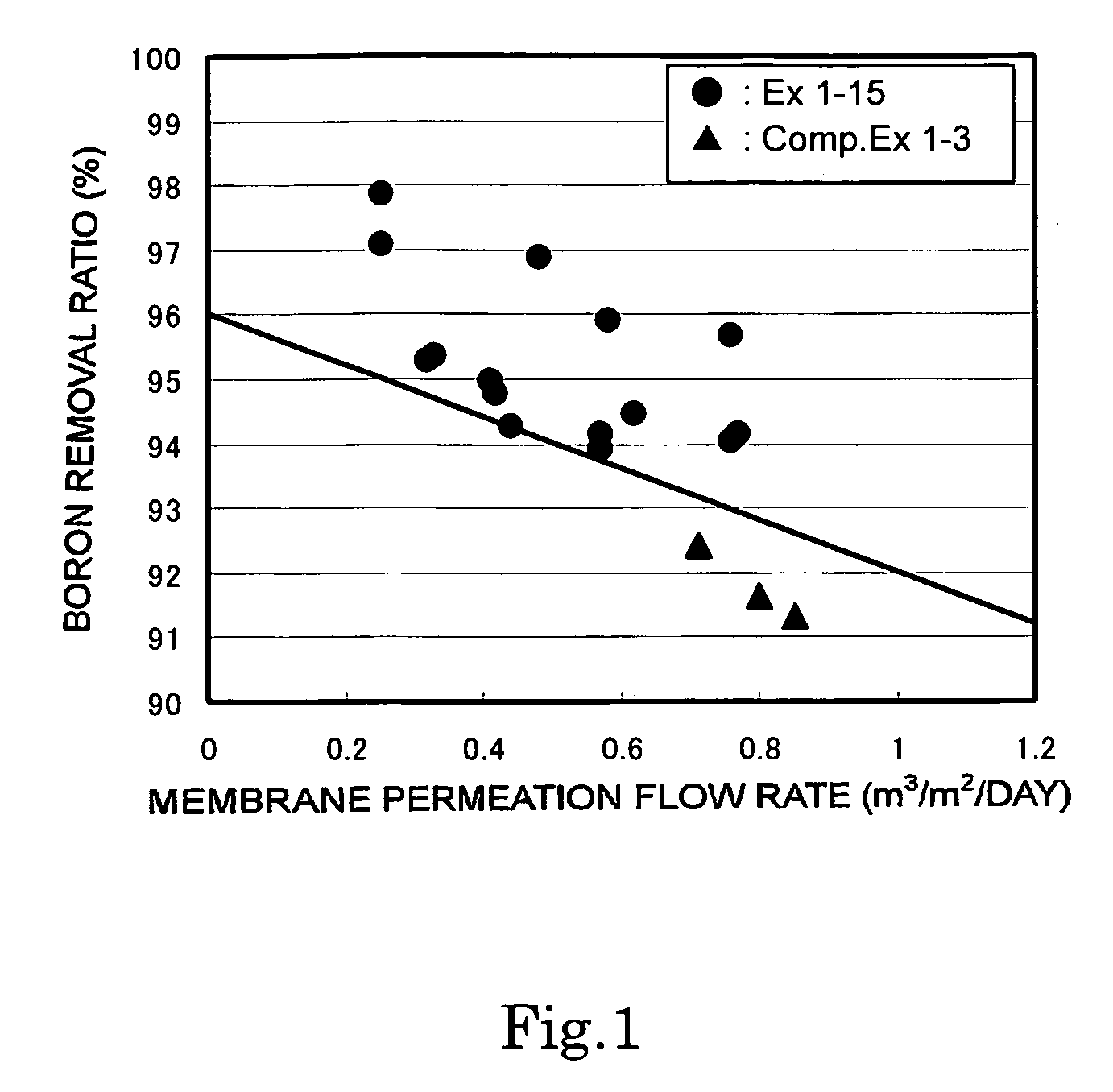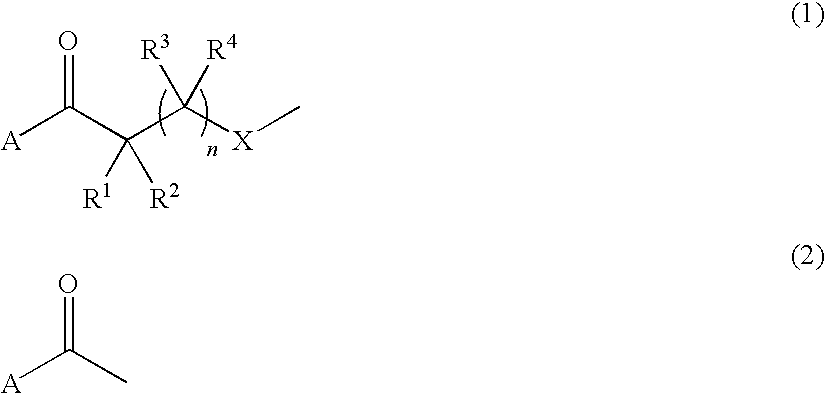Composite Semipermeable Membranes, Methods for Production Thereof and Uses Thereof
a semi-permeable membrane and semi-permeable technology, applied in reverse osmosis, separation processes, filtration separation, etc., can solve the problems of increasing the difficulty in reducing the boron content to a level acceptable for drinking water, and increasing the need for composite semi-permeable membrane removal performance. , to achieve the effect of high removal ratio, high desalination performance and high removal ratio
- Summary
- Abstract
- Description
- Claims
- Application Information
AI Technical Summary
Benefits of technology
Problems solved by technology
Method used
Image
Examples
reference example 1
Synthesis of (4-Chlorocarbonylmethoxyphenoxy)acetyl Chloride (Compound 1)
[0082]In 50.0 ml of N,N-dimethylformamide (hereinafter abbreviated as DMF) were dissolved 5.51 g (50.0 mmol) of hydroquinone and 16.1 g (105.0 mmol) of methyl bromoacetate, and 20.7 g (150.0 mmol) of potassium carbonate was added to the solution and stirred for 12 hours. Water was added to the reaction mixture, and the mixture was extracted with ethyl acetate. The organic layers were then combined, washed with an aqueous sodium hydrogen carbonate solution, water, and an aqueous saturated sodium chloride solution; and dried over anhydrous sodium sulfate. After the drying agent was removed, the product was concentrated under reduced pressure. The resulting residue was recrystallized with methylene chloride / n-hexane to give 10.7 g of a colorless crystal.
[0083]To a solution of 7.80 g of the crystal in 30.0 ml of methanol was added 46.0 ml (92.0 mmol) of an aqueous 2 N sodium hydroxide solution over 20 minutes, and ...
reference example 2
[0085]Compound 2 was synthesized using the process of Reference Example 1, except that resorcinol was used in place of hydroquinone.
reference example 3
[0086]Compound 3 was synthesized using the process of Reference Example 1, except that phloroglucinol was used in place of hydroquinone.
PUM
| Property | Measurement | Unit |
|---|---|---|
| Temperature | aaaaa | aaaaa |
| Fraction | aaaaa | aaaaa |
| Percent by mass | aaaaa | aaaaa |
Abstract
Description
Claims
Application Information
 Login to View More
Login to View More - R&D
- Intellectual Property
- Life Sciences
- Materials
- Tech Scout
- Unparalleled Data Quality
- Higher Quality Content
- 60% Fewer Hallucinations
Browse by: Latest US Patents, China's latest patents, Technical Efficacy Thesaurus, Application Domain, Technology Topic, Popular Technical Reports.
© 2025 PatSnap. All rights reserved.Legal|Privacy policy|Modern Slavery Act Transparency Statement|Sitemap|About US| Contact US: help@patsnap.com



